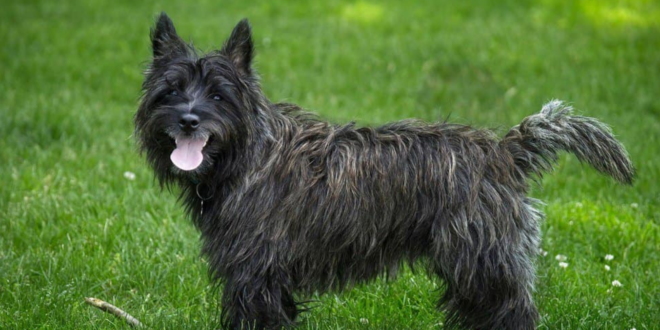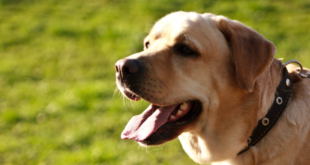Puppy ownership can be an engaging and rewarding experience. From cuddling to playtime, a new puppy is always exciting. However, nothing beats the feeling of taking your furry friend for a walk outside in the fresh air. While the thought of strolling with your animal companion sounds like picture-perfect bonding time, it can quickly become a nuisance if your dog is not properly trained on a leash. That’s why we’ve put together this inside scoop on mastering puppy leash training. Walk with us as we explore tips and techniques to help you and your pup walk confidently side by side.
Table of Contents
1. From Ripping to Walking: The Puppy Leash Training Journey Begins
Leash training is an essential part of a puppy’s life as it teaches them to walk properly and helps to socialize them. A puppy must be introduced to a collar before starting training. A collar should fit snugly around your puppy’s neck but allow them to breathe easily. A collar that is too tight can cause breathing problems and should be avoided at all costs.
Begin by keeping your puppy on a leash indoors for short periods. This will help them get used to the sensation of being tethered. You may notice that your puppy will pull and try to break free at first. Be patient and gentle but also assertive. Offer treats and praise when your puppy behaves well and try to avoid punishment.
Next, initiate leash training outside. Make sure to choose a quiet and safe location to avoid any distractions. Encourage your puppy to walk beside you by offering treats and praise. Gradually increase the distance of your walk and monitor your puppy’s behavior closely. Take note of what triggers your puppy and try to avoid this in the future. With time and patience, your puppy will learn to walk correctly on a leash.
2. Building a Strong Foundation: Understanding Your Puppy’s Behavior
Understanding your puppy’s behavior is a crucial step in building a strong foundation for their training. Just like humans, every puppy has its unique personality and way of communicating, so it’s essential to learn your pup’s body language and vocalizations to understand their needs and wants.
Puppies communicate mainly through body language, and by observing your pup’s disposition, you can detect their mood and emotions. For instance, if your puppy wags their tail and has relaxed body language, it’s a sign that they are happy and comfortable. On the other hand, if they freeze, growl, or bark excessively, it indicates aggression or fear.
Another crucial aspect of understanding your furry friend’s behavior is their socialization skills. Dogs are social creatures, and by exposing them to different people, animals, and situations, you can shape their behavior and prepare them to handle new experiences adequately. So, make sure your puppy meets different people and animals, and expose them to new sounds, sights, and smells positively.
Overall, by paying attention to their body language, vocalizations, and socialization, you can understand your puppy’s behavior better, and creating a strong foundation for their training becomes much easier. Remember, building a strong foundation through proper understanding and positive interactions can help your pup become a happy, well-adjusted adult dog.
3. The Art of Positive Reinforcement: Effective Training Methods to Adopt
Positive reinforcement is a technique of behavior modification that makes use of rewards to encourage desirable behavior. Through the use of positive reinforcement, desired behaviors are not only encouraged but also reinforced, therefore, becoming more permanent. Positive reinforcement can be used in diverse settings and situations, ranging from schools to workplaces, and even in homes. However, different positive reinforcement methods are best suited for different scenarios, and thus, it is important to understand the techniques that work best.
One effective positive reinforcement method is verbal praise, which entails verbally acknowledging good behavior. This not only motivates individuals to continue with the good behavior but also gives them the necessary confidence to keep growing. In addition to verbal praise, it is also important to provide tangible rewards for good behavior. This could range from small prizes to bigger incentives, depending on the accomplishment.
Another effective positive reinforcement method entails social rewards, which involve reinforcing positive behavior through social interactions. This includes positive feedback from peers and supervisors, promoting a positive and supportive environment. When positive behavior is reinforced with social rewards, individuals are more likely to continue the behavior in the future. Additionally, consistency is key in positive reinforcement. When consistently used, positive reinforcement helps to create a long-term change in behavior, making it easier to adopt new, positive habits and practices.
4. Tips and Tricks: Troubleshooting Common Leash Training Problems
Are you struggling with your dog’s leash training? Don’t worry, it’s a common problem that many dog owners face. Here are some tips and tricks to help you troubleshoot some common issues during leash training.
Firstly, if your dog is pulling on the leash, try changing your walking route. Dogs often pull because they are excited or trying to go towards something they find interesting. Choose a less exciting route or take a different turn to keep your dog focused on the walk and less distracted. Additionally, reinforce positive behavior with treats and rewards. When your dog walks calmly by your side, give them treats or toys as a reward.
Secondly, if your dog is resisting wearing a leash, try introducing it slowly. Start by leaving the leash near their food or water bowl so they can smell and get used to it. Gradually hold the leash next to them to see their reaction. Once they feel comfortable around the leash, attach it to their collar and let them walk around the house while dragging the leash behind them. This will help them get used to the feeling of being tethered to something before going on a walk.
Remember, leash training is a process that takes time and patience. Keep practicing and using positive reinforcement to help your dog learn, and soon you’ll be enjoying peaceful walks with your four-legged friend.
5. Hitting the Milestone: Celebrating Your Puppy’s Leash Training Success
Once you’ve successfully trained your puppy to walk on a leash, it’s time to celebrate! This is a huge milestone for both you and your furry friend. Not only does it make walking your pup easier and more enjoyable, but it also ensures their safety when out and about. Here are some ways to celebrate your puppy’s success:
– Take a long walk: Now that your pup is comfortable on a leash, take them on a longer walk than usual. This is a great way to get some exercise for both you and your furry friend.
– Plan a playdate: Invite your friends and their dogs over for a playdate in the park. Your puppy can show off their leash skills while socializing with other pups.
– Give them a treat: Treat your pup with their favorite snack or a new toy. This will not only reward them for their hard work, but also motivate them to continue their good behavior.
– Take a photo: Capture this special moment by taking a photo of your pup on their leash. You can even create a photo album to document their leash training journey.
Remember, positive reinforcement and consistency are key when it comes to leash training. Celebrate your puppy’s success and continue to encourage good behavior. Congratulations on hitting this milestone with your furry friend!
Don’t put off leash training your puppy any longer! With proper guidance and some patience, you’ll be ahead of the game and have a well-trained pup in no time. Now you have the inside scoop on mastering puppy leash training, so take the leash and lead your pup to a successful training session!
 Treat For Dog – Brain Training for Dogs, Dog Training & Obedience Discover Treat For Dog and get your pup on the path to smarter, happier, and healthier living with brain training for dogs.
Treat For Dog – Brain Training for Dogs, Dog Training & Obedience Discover Treat For Dog and get your pup on the path to smarter, happier, and healthier living with brain training for dogs.




